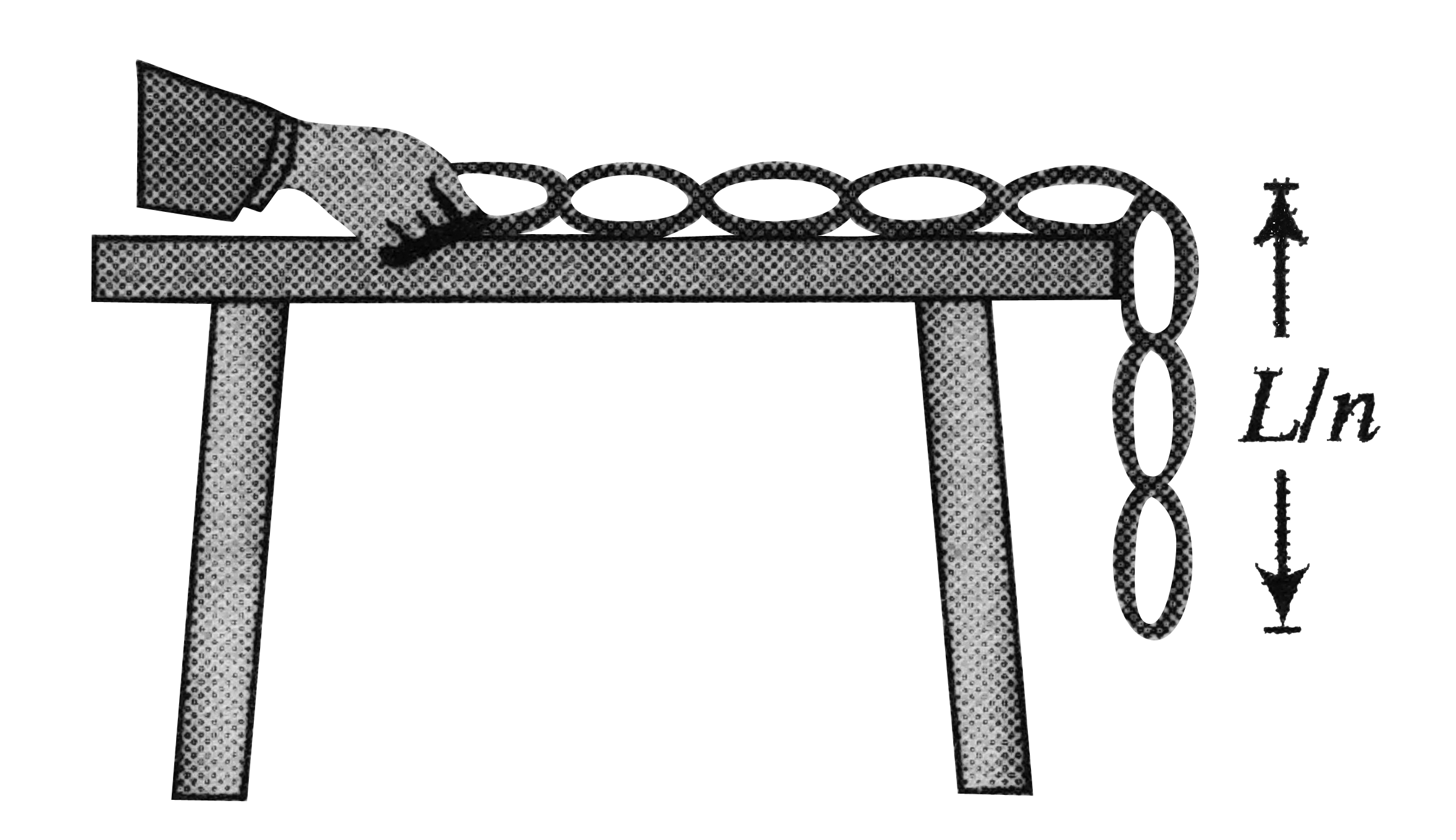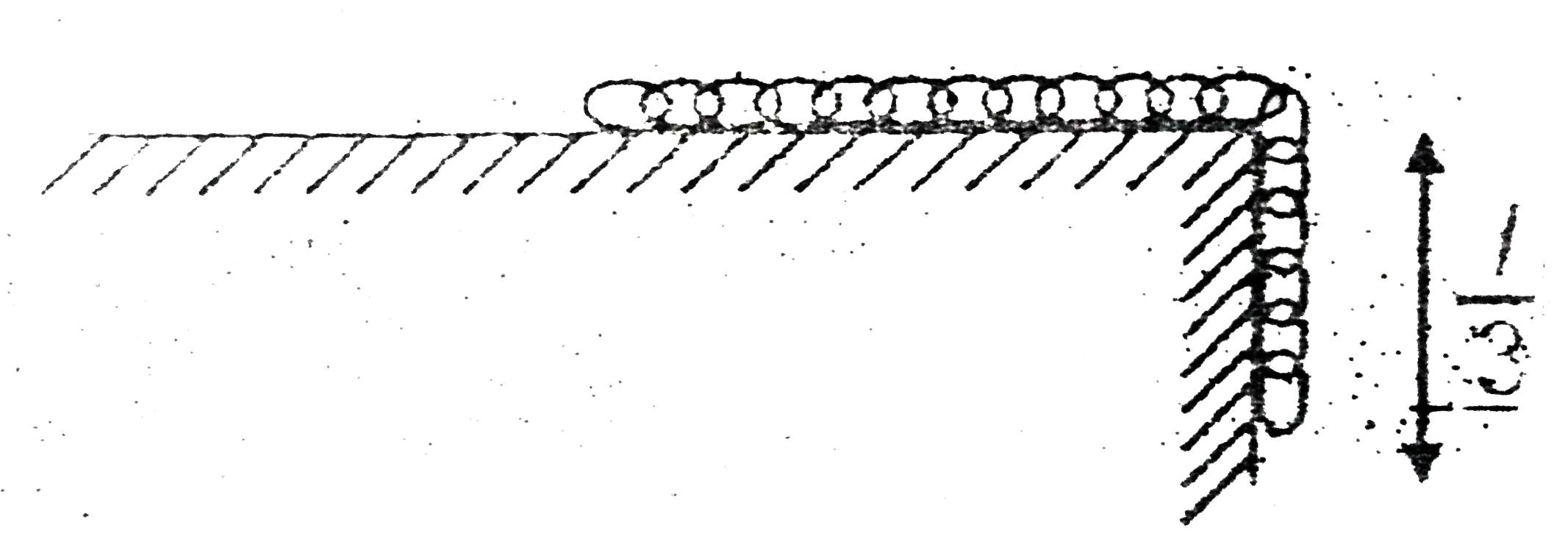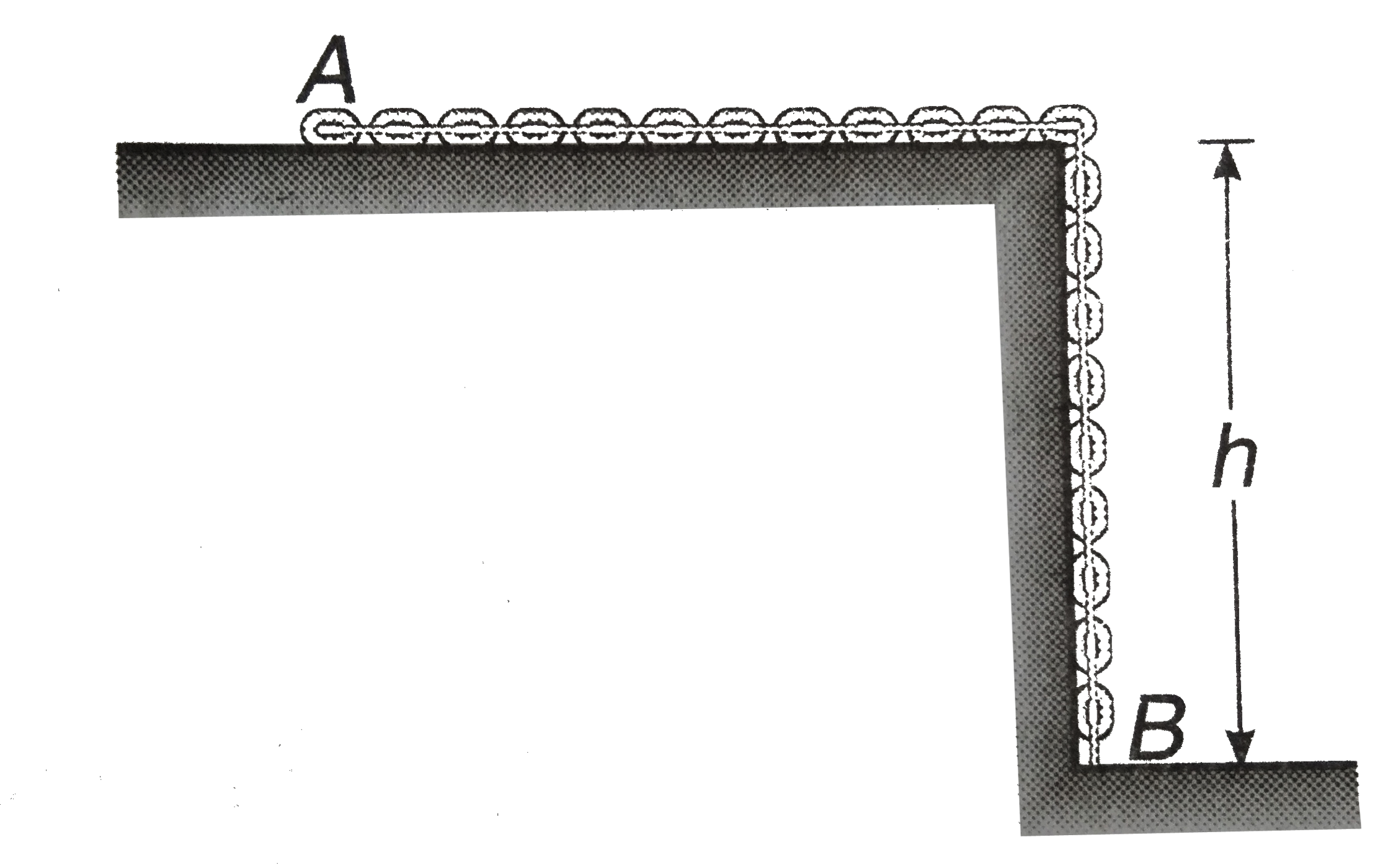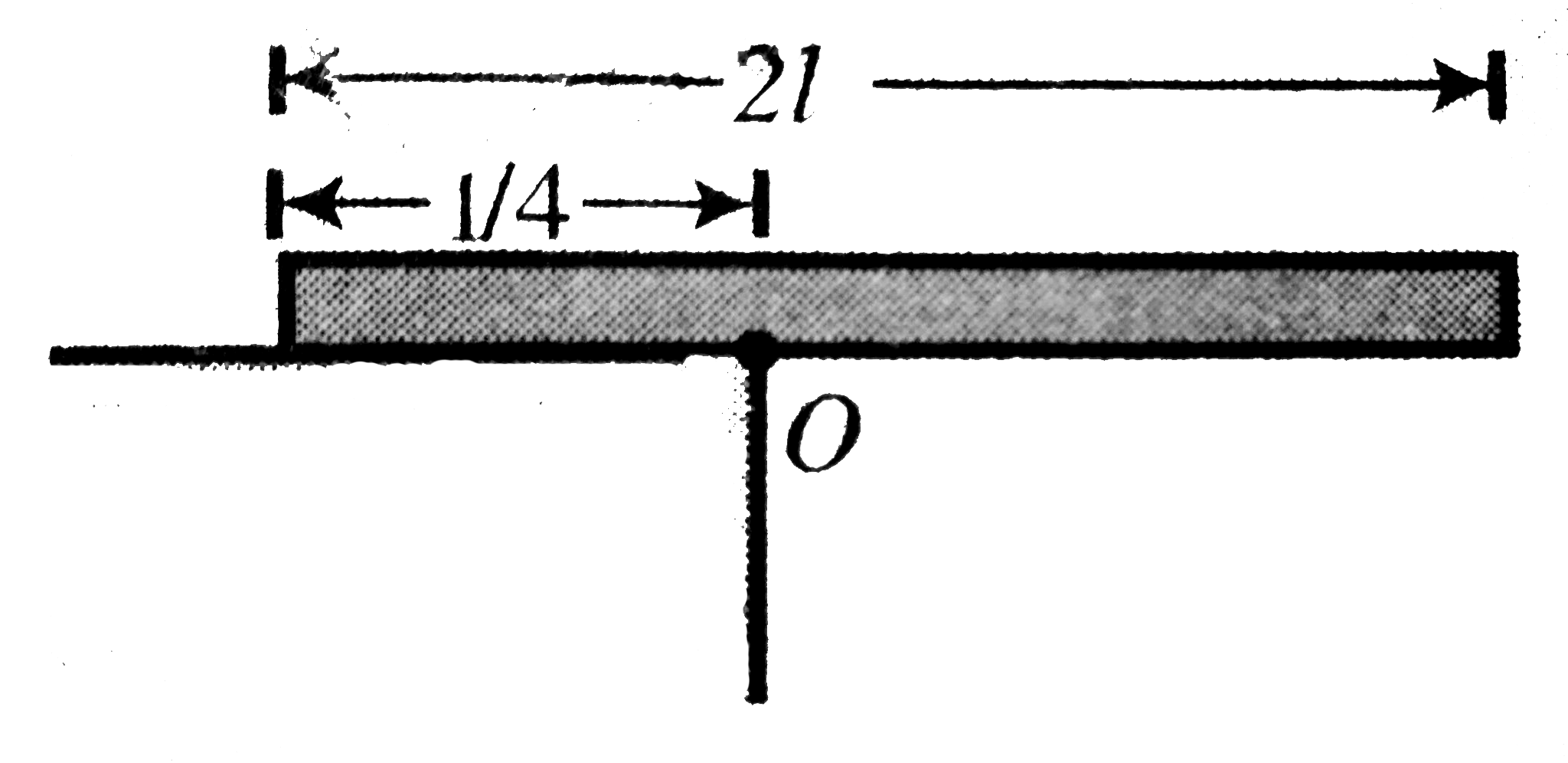A uniform chain of length l is placed on a smooth horizontal table, such that half of its length hangs over one edge. It is releasedfrom rest, the velocity with which it leaves the table is
√3gl4
√3gl2
√2gl3
√gl3
The correct Answer is:A
To solve the problem of finding the velocity with which the chain leaves the table, we can follow these steps:
1. Understanding the Setup:
- We have a uniform chain of length L.
- Half of the chain, which is L2, is hanging off the edge of the table.
- The chain is released from rest.
2. Identifying the Mass of the Chain:
- Let the total mass of the chain be M.
- The mass of the hanging part of the chain is M2 since half the length is hanging.
3. Calculating the Change in Gravitational Potential Energy:
- The center of mass of the hanging part of the chain is at a distance of L4 below the table (since it is uniformly distributed).
- The change in gravitational potential energy (ΔPE) when the chain is released can be calculated as:
ΔPE=−(mass of hanging part)×g×(height of center of mass)
ΔPE=−(M2)×g×(L4)=−MgL8
4. Relating Potential Energy to Kinetic Energy:
- The loss in gravitational potential energy is converted into kinetic energy (KE) of the chain as it falls.
- The kinetic energy of the chain when it leaves the table is given by:
KE=12Mv2
- Setting the loss in potential energy equal to the kinetic energy:
−MgL8=12Mv2
5. Solving for Velocity:
- We can simplify the equation by canceling M (assuming M≠0):
−gL8=12v2
- Rearranging gives:
v2=gL4
- Taking the square root of both sides, we find:
v=√gL4=12√gL
Final Answer:
The velocity with which the chain leaves the table is:
v=12√gL
- We have a uniform chain of length L.
- Half of the chain, which is L2, is hanging off the edge of the table.
- The chain is released from rest.
- Let the total mass of the chain be M.
- The mass of the hanging part of the chain is M2 since half the length is hanging.
- The center of mass of the hanging part of the chain is at a distance of L4 below the table (since it is uniformly distributed).
- The change in gravitational potential energy (ΔPE) when the chain is released can be calculated as:
ΔPE=−(mass of hanging part)×g×(height of center of mass)
ΔPE=−(M2)×g×(L4)=−MgL8
- The loss in gravitational potential energy is converted into kinetic energy (KE) of the chain as it falls.
- The kinetic energy of the chain when it leaves the table is given by:
KE=12Mv2
- Setting the loss in potential energy equal to the kinetic energy:
−MgL8=12Mv2
- We can simplify the equation by canceling M (assuming M≠0):
−gL8=12v2
- Rearranging gives:
v2=gL4
- Taking the square root of both sides, we find:
v=√gL4=12√gL
The velocity with which the chain leaves the table is:
v=12√gL
Topper's Solved these Questions
- WORK, ENERGY AND POWERBOOK - DC PANDEY ENGLISHCHAPTER - WORK, ENERGY AND POWEREXERCISE - MATCH THE COLUMNS
7 Videos
- WORK, ENERGY & POWERBOOK - DC PANDEY ENGLISHCHAPTER - WORK, ENERGY & POWEREXERCISE - Level 2 Comprehension Based
2 Videos
- WORK, POWER AND ENERGYBOOK - DC PANDEY ENGLISHCHAPTER - WORK, POWER AND ENERGYEXERCISE - E Integer Type Questions
11 Videos
Similar Questions
A chain of length L and mass M is held on a frictionless table with (1/n)th of its length hanging over the edge. When the chain is released, find the velocity of chain while leaving the table.

View SolutionA uniform chain of length l and mass m is placed on a smooth table with one-fourth of its length hanging over the edge. The work that has to be done to pull the whole chain back onto the table is :
View SolutionA uniform chain of mass m and length l is lying on a horizontal table with one-third of its length hanging over the edge of the table.

What is the speed of the chain, when it just loses contact with the table?
View SolutionA chain AB of length l is located on a smooth horizontal table so that its fraction of length h hangs freely with end B on the table. At a certain moment, the end A of the chain is set free. With what velocity with this end of the chain slip off the table?

View SolutionA uniform chain of mass m and length l is lying on a horizontal table with one-third of its length hanging over the edge of the table.

If the chain is limiting equlibrium, what is the coefficient of friction for the contact between table and chain?
View SolutionA uniform chain of length L lies on a smooth horizontal table with its length perpendicular to the edge of the table and a small portion of the chain is hanging over the edge. The chain starts sliding due to the weight of the hanging part
View SolutionA uniform chain of mass m and length l is lying on a horizontal table with one-third of its length hanging over the edge of the table.

If a gentle push is given to hanging end, it will start moving down. What is the change in gravitational potential energy of the chain, as it just leaves the table?
View SolutionA chain (AB) of length l loaded in a smooth horizontal table so that its fraction of length h hangs freely and toucher the surface of the table with its end B. At a certain moment ,the end A of the chain is set free. With what velocity will this end the chain slip out of the table ?
 .
.
View SolutionOne fourth length of a uniform rod of length 2l and mass m is place don a horizontal table and the rod is held horizontal. The rod is released from rest. Find the normal reaction on the rod as soon as the rod is released.

View SolutionA uniform chain of mass m & length L is kept on a smooth horizontal table such that Lnportion of the chaing hangs from the table. The work dione required to slowly bringsthe chain completely on the table is
View Solution
